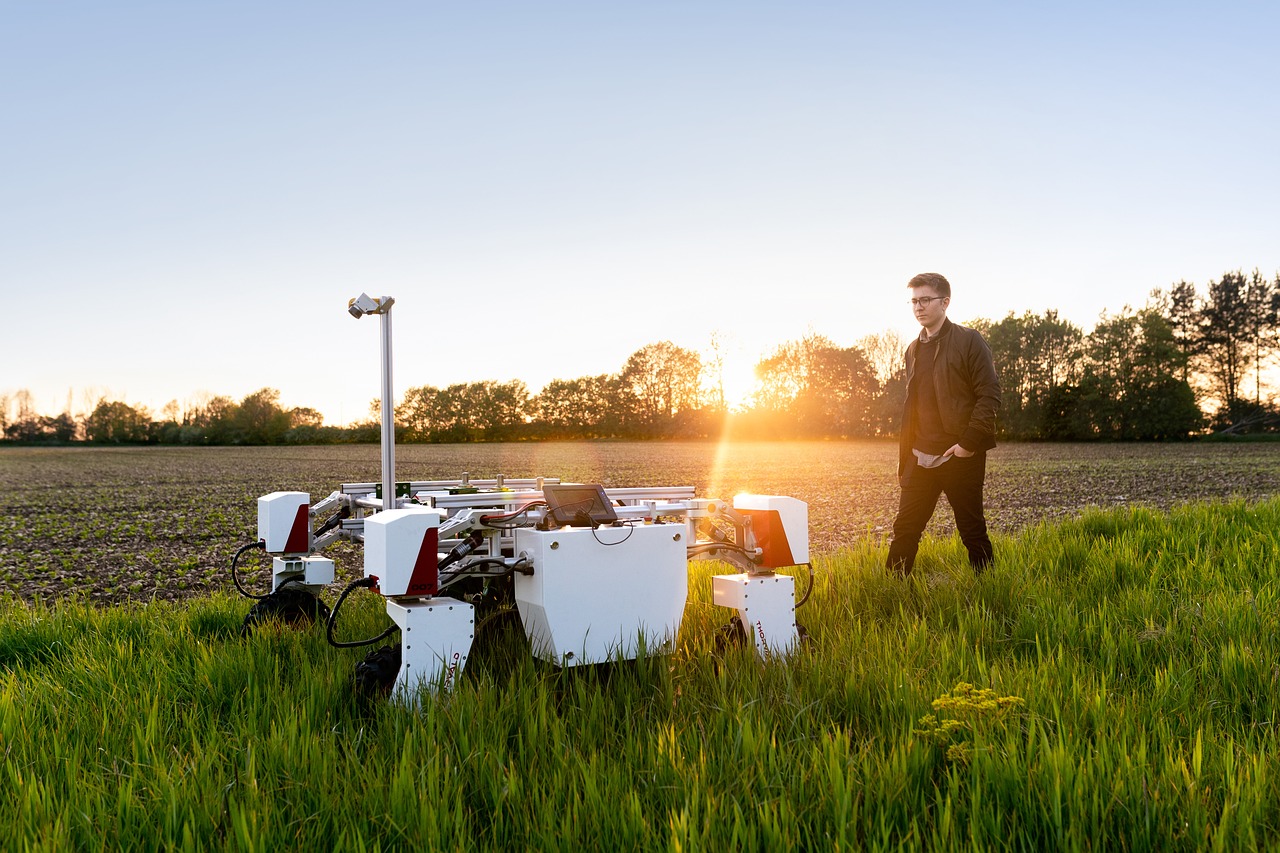All over the world farmers
are turning to technology to help manage their agricultural operations. Using technology can have benefits,
limitation and challenges.

Image source: RAEng_Publications, Pixabay, Pixabay
License
Benefits
On the whole technology is being used as it can be beneficial in terms of increasing efficiency and productivity of the farm.
Some benefits of using technology can include:
- Increased efficiency in tasks such as planting, irrigation and harvesting.
- Precision farming uses technology to enable precise application of seed distribution, water, fertilisers and pesticides, which can optimise planting and reduce waste.
- Data-driven decision-making involves using data such as weather conditions and soil health to make informed decision about operations.
- Enhanced crop monitoring by using sensors and remote monitoring systems to provide real-time data on crop health, soil conditions, and weather forecasts, enabling timely interventions and better decision-making.
- Sustainable practices by using technology promotes sustainable farming practices by optimising resource use, reducing chemical inputs, and minimising soil erosion, leading to more environmentally friendly agriculture.
- Crops can be better protected using AI-powered systems that can identify and address pest and disease outbreaks early, reducing crop losses and the need for chemical treatments.
- Yield and quality of crops can be increased using technology-driven practices, which contributes to increased profitability for the farm.
- The supply chain can be streamlined from farm to market using technology, which helps reduce food waste and ensure fresher products reach consumers.
- Farmers can access valuable information and training through mobile apps and online resources, keeping them informed about the latest agricultural techniques and market trends.
- The adoption of agricultural technology can boost rural economies by creating jobs in technology development, maintenance, and support.
The use of technology is allowing farmers to operate more efficiently and make more informed decisions using the data they collect. This leads to more productivity, increased sustainable farming practices and reduces waste of resources. It helps address the challenges of feeding a growing global population while promoting sustainability and economic development.
Limitations and challenges
Whilst the benefits of technology are great, we also need to be aware of the limitations and challenges that can be associated with the adoption of technology. Some limitations and challenges include:
- High cost of technology can be a barrier for some smaller farms.
- Limited access to infrastructure to support technology such as internet and electricity.
- Data security and privacy concerns of farm management information.
- Compatibility issues may arise when trying to incorporate new technologies into existing farming operations.
- Lack of necessary skills of farm workers to use the technology.
- Farmers resistance to change toward introducing new technologies to their operation.
Overcoming these challenges and limitations requires a collaborative effort from farmers, tech developers and other stakeholders. As we progress through this microcredential we will continue to look at some of these limitations and challenges and the strategies that are being used to overcome these.
Background Colour
Font Face
Font Kerning
Font Size
Image Visibility
Letter Spacing
Line Height
Link Highlight
Text Colour